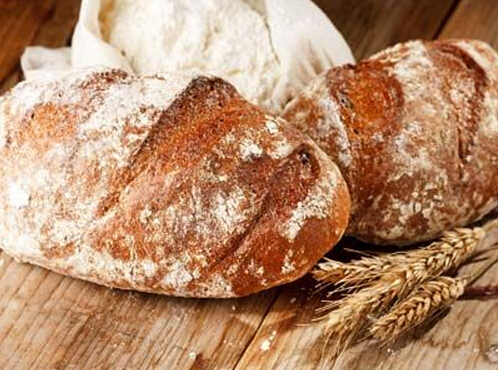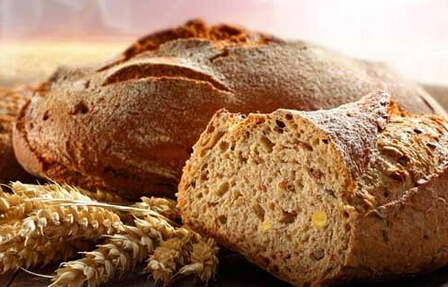Food is made up of carbohydrates, proteins and fats, and it may be the one of the simple pleasures of life. However for people with diabetes, things seem to become more complicated. What can’t you eat, what can you eat. Foods that have lots of carbs will spike your blood sugar levels. It is a must to keep your blood sugar levels under control and study foods. Carbs are found in numerous different kinds of foods, such as bread, grains, desserts. Completely quitting carbohydrates isn’t healthy, realistic or even necessary for you. The carb intake is what matter to you the most and eat the nutritional foods.
A lower carbohydrate diet may help with diabetes management. If you are considering reducing the carbohydrate content of bread, this information may help. You can also consult us for individualized advice.
Thousands of people suffering from erratic blood sugar has been using this ground-breaking solution…
To help them burn away dangerous fat from their vital organs and bellies…
While stabilizing their blood sugar levels naturally and effectively.
And starting today…
Whole-grain breads with high-fiber ingredients, such as bran and oat, may be an ideal breakfast option for diabetics.
Making your bread at home with diabetes-friendly, specific ingredients will help lower the negative impact bread has on your blood sugar levels.

Highlights
- Most breads are made of wheat, which is mainly starch and high in carbohydrates. Some are high in sugar, overly processed, and filled with empty calories, which will be detrimental to weight loss efforts and overall health.
- Don’t make a decision lightly. It is vital to study the nutritional diet thoroughly when determining which breads to avoid and which to purchase.
- Nearly everyone has heard the advice to select whole-grain bread instead of white bread. ADA also recommends 100 percent whole-wheat bread over white bread.
Improving the glycemic index of bread
The Glycemic Index (GI) is actually a relative ranking of carbs in the foods according to how those foods affect blood glucose levels. A glycemic index diet is also an eating plan based on how foods affect blood sugar levels. There are three basic kinds of GI: low, medium, and high.
The purpose of a GI diet is to consume carbohydrate-containing foods that are less likely to trigger large increases in blood sugar levels.
Low-glycemic foods are those which have little to no carbs. They include small berries, meat, seeds, nuts, green vegetables etc.
Medium-glycemic foods have whole-grain such as oats, brown rice, whole wheat and most fruits.
High-glycemic foods have sugar, white potatoes, refined grains and white bread. You would be interesting in knowing the common myths about diabetes and sugar.
I’ve been thinking of bake my own bread as an alternative to store bought. For people who are thinking of baking their own diabetes-friendly bread, there are lots of ingredients which can be added to your mix to reduce the GI of final product. High-fat, high-protein, and high-fiber may be the very vital additions to lower the impact breads have on blood sugar. There are awesome ingredients such as oats, wheat bran, chia seeds, flaxseed meal.
Bakers have lots of great ideas to make breads, they generally replace one-fourth flour with the equal proportion of some other healthy ingredients. For example, you can replace half a cup of flour with half a cup of the flaxseed meal. There are other great ingredients to replace for the flour, if you read enough information, you will figure out it.
The GI will be reduced further if bread is baked. People with diabetes can spread on healthier fats such as flaxseed oil or avocado to replace the mayonnaise and some other high-glycemic, sugary spreads.
Four Diabetes-friendly Breads
Up until the 1950s, In fact bread had been made with sourdough leavening as the primary method, which would take up to one day to produce. You should know this amount of time was surely necessary for the best conditioning of the dough.
Commercial breads sold at most supermarkets are generally made with white flour, which is made from heavily processed and refined wheat grains. Refined white flour can send blood sugar skyrocketing and is actually absent of fiber. Even breads advertised as “wheat bread” in the market may be made with the refined wheat plus not whole grain. Anyone knows that the refined wheat is not good for health.
Refined wheat flour is flour made after the endosperm from the kernel-no bran and no germ, which is mainly white in color.
It is deceptive form of Ads which can lead lots of people with diabetes to buy wrong breads for their health concerns. Health concerns are very important for people with diabetes.
There are primarily four types of breads in the market, along with some information about the overall healthy lifestyle, surely healthier options for people to manage their diabetes.
Whole Grain, Fiber-enriched Bread
Fiber is very good for people with diabetes. It is a type of carbohydrate like starches and sugars but because it’s not broken down by our body. In fact it doesn’t contribute any calories. Fiber is an important nutrient which can help control our blood sugar. It means that eating foods rich in fiber is less likely to cause a spike in high blood sugar.
Why fiber is said to reduce the GI of a food as the soluble fiber can slow digestion’s rate as well as reduce the rise in our blood sugar after eating.
If you like bread, keep it in your diet. However eat it in moderation. They are still relatively high in carbs. So enjoy an open-face sandwich instead of eating two slices of bread.
Multi-grain Sandwich Bread
I’ve been into bread baking for a few weeks. While high in carbs, a multi-grain is usually made with unrefined, whole grains. We all know that these grains are typically high in the naturally occurring fiber that not enriched, an vital ingredient for reducing the impact which carbs have on blood sugar. It seems great.
When selecting whole-grain breads, people should find ones that have ingredients such as barley, bran, brown rice, whole-grain wheat, buckwheat, quinoa, and oats.
In addition to being lower in the glycemic index, lots of whole grains include many nutrients such as protein, vitamin E, and zinc. These nutrients will give you healthier body.
Low-carbohydrate tortillas
On a diet or following a healthier eating regimen? Low-carbohydrate tortillas are the great complement to help reach your overall nutritional goals.
Low-carbohydrate tortillas are another option and they can offer a versatile, tasty and even healthier option for sandwiches.
In the United States, diabetes has become increasingly prevalent in recent years. As the diabetes epidemic and other diseases continue to escalate around the world, lots of companies have been pushing out more and more low-carbohydrate tortillas and other health foods for health-conscious buyers.
When it comes to wellness, Americans suffer from a lot of diseases. And even the most health-conscious Americans aren’t immune.
If you are low in fiber, try some simple foods swaps like low-carbohydrate tortillas, they usually have added fiber to lessen the carbohydrate count. And many of tortillas are just made with low-carb ingredients such as soy protein powders and whey.
Diabetics can warp their favorite sandwich ingredients in your tortilla, and they can be used for tacos, homemade burritos, and mini pizzas.
All in all, low-carbohydrate tortillas are an excellent source of fiber that maintain your healthy body.
Grain-free Bread
I am grain-free and do enjoy a great grain-free bread every once in a while. With all nice recipes out there I would say that the best choice for the diabetes-friendly bread is the one made without grains or flour. While flour-free and sprouted-grain breads are a really good source of fiber, however they are still rich in carbs. And they taste nice.
Grain-free breads made with some ingredients such as flaxseed meal, coconut flour, and almond flour can be bought in specialty food stores. However look up nutrition facts as they may be also higher in calories. Also gluten-free foods tend to be higher in calories and fat than regular, wheat-based foods.
Making grain-free bread can be a really challenging. You must have a nice recipe and have to measure precisely. And these breads tend to be pricier than regular ones.

Can Diabetics Eat Pita Bread
If you want to know can diabetics eat pita bread, then some information below you will find.
GI (56 -59) for pita bread is belong to medium. You can make your own pita as one bite of it, warm, fresh from the oven. The dough is just simple to make since the dough rounds are thin, and they just bake in less than five minutes.
The Virtue of Rye Bread for Diabetic Patient and Pre Diabetic
Whole rye breads now are known for our health virtues like breast cancer, reduction of the risk of colon, many minerals, vitamins, long term energy, assistance to the digestive system function, and increment of satiety. Furthermore, the whole rye breads, especially breads from the 100% whole rye flour and other healthy ingredients, are extremely ideal for people with diabetes.
Seeking Advice from Dietitian or Nutritionist
You can seek the advice of a nutritionist or dietitian. Unless specified by a dietitian or doctor, people with diabetes don’t necessarily need to get rid of breads from their diet. It may be the best bet to keep breads in your diet with whole-grain, multi-grain, and low-carbohydrate options without posing a big health risk.
Make it yourself
With commercial bread, they usually replace it with sweeteners as well as other chemicals which have some nutrition yet is really unnatural for your body and isn’t possible for you to benefit from.
The best way is to do it yourself. Simply ensure that the ingredients you use are natural. Enjoy it.
My successful Diabetes Treatment Story
My doctor diagnosed me with diabetes just over a year ago, at the time I was prescribed Metformin. I went to the some diabetes related websites and learned about the diet they suggested. I started the diet right away and I was very loyal to it. However, after weeks of being on the diet it never helped, my blood sugar didn’t drop like I wanted it to. My personal physician wasn’t much help either, he didn’t really seem to give me any other options besides my prescription and the usual course of insulin. I was about to give up and then I discovered a great treatment method. The guide was authored by one of the leading professionals in the world of diabetes research, Dr. Max Sidorov. This is a guide that that shows you, in a very simple way, how to conquer the disease without traditional methods. I have to say that since I’ve found the guide and followed it, I’ve not only improved my health but I’ve also lost weight and improved other aspects as well. My activities have increased and I have a ton of energy! It is my goal to share the this diabetes treatment method as much as possible to show people there’s more to the disease than traditional schools of thought and you can find your own path to healing with natural methods.Thousands of people suffering from erratic blood sugar has been using this ground-breaking solution…
To help them burn away dangerous fat from their vital organs and bellies…
While stabilizing their blood sugar levels naturally and effectively.
And starting today…

